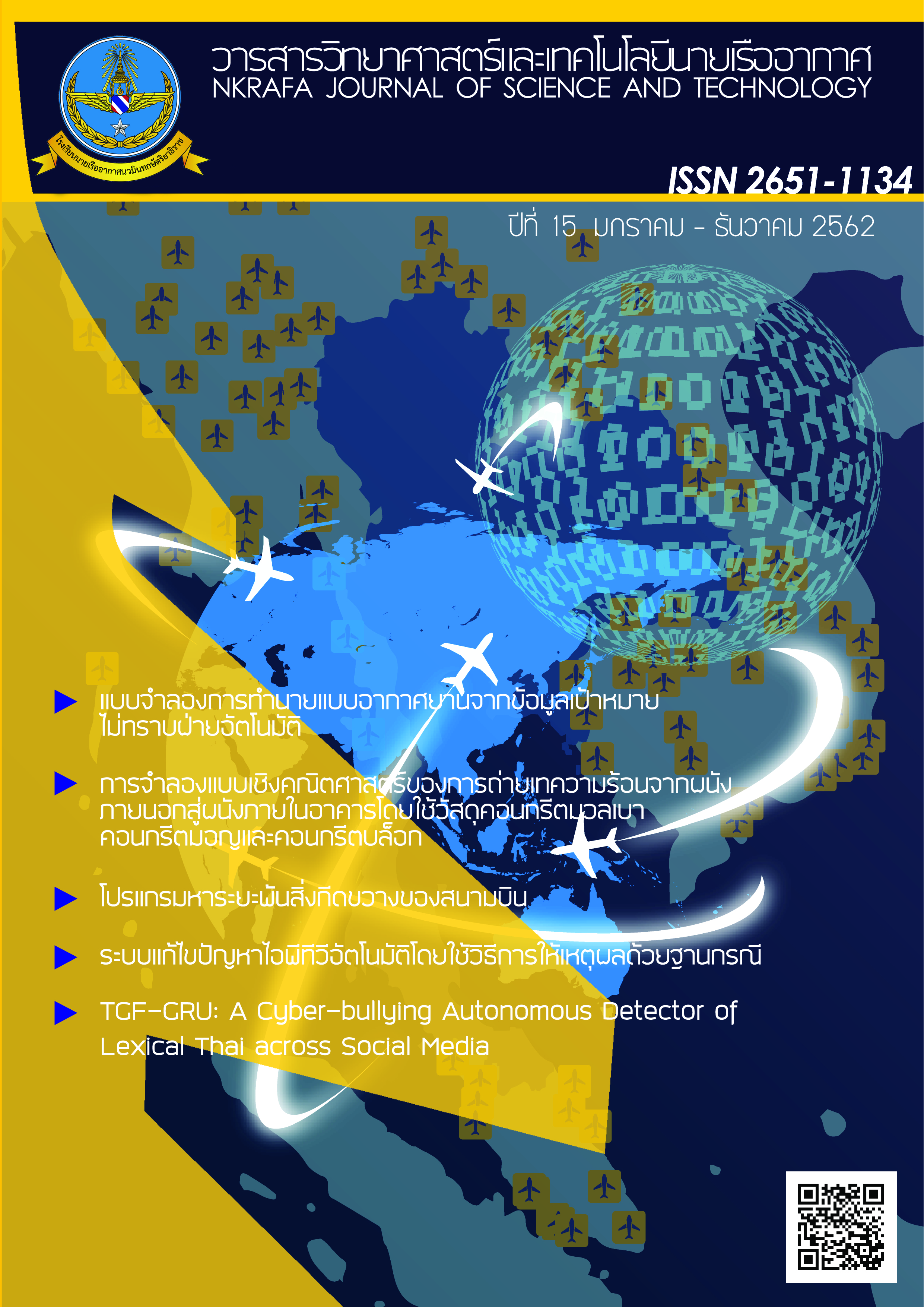AHP application for method selection of Royal Thai Navy maritime patrols
Main Article Content
Abstract
This objective of this research is to select the suitable method to apply with Royal Thai Navy Maritime Patrols in order to reduce the number of ship. Which is used the Analytic Hierarchy Process to support methods obtained from the relevant literature and research in 4 methods i.e. Satellite Technology, Unmanned Aerial Vehicle (UAV) Technology, Underwater Sensing Network, and Radars. All information used in this research were collected via questionnaires surveys and interviews from the expertise in maritime patrolling with the 4 methods and person who works in Naval Acquisition Management Office (NAMO). The survey is asking both participants to indicate degree of perceived importance level of each factor to select the suitable method of Royal Thai Navy Maritime Patrols. Pairwise comparison was applied to prioritize the factors by score 1 to 9 maximum. The research result revealed that the most important decision factors affected the selection the suitable method of Royal Thai Navy Maritime Patrols ranking from highest to lowest were User’s safety, Risk of an offensive, Usability, Reliability and the Preciseness of data. As the result mentioned above, the suitable method for the Royal Thai Navy Maritime patrols is Satellite Technology.
Article Details
- Content and information in articles published in NKRAFA Journal of Science and Technology are comment and responsibility of authors of articles directly. Journal editorial do no need to agree or share any responsibility.
- NKRAFA Journal of Science and Technology Articles holds the copyright of the content, pictures, images etc. which published in it. If any person or agency require to reuse all or some part of articles, the permission must be obtained from the NKRAFA Journal of Science and Technology.
References
Emad Felemban et al. (2015). Underwater Sensor Network Applications: A Comprehensive Survey. International Journal of Distributed Sensor Networks, 11: 1-14.
Klein Marine System, INC. (2561). HarborGuard-Pro Maritime Security & Surveillance. Retrieved on January 10, 2019, from http://kleinmarinesystems.com/
กัลยา วานิชย์บัญชา. (2542). การวิเคราะห์สถิติ : สถิติเพื่อการตัดสินใจ. พิมพ์ครั้งที่ 4. กรุงเทพมหานคร:โรงพิมพ์แห่งจุฬาลงกรณ์วิทยาลัย.
ดิศรณ์ ปนัดเศรณี. (2551). การศึกษาต้นทุนปฏิบัติการสำหรับการออกปฏิบัติการในทะเลของเรือรบในราชการกองทัพเรือ. (วิทยานิพนธ์วิทยาศาสตรมหาบัณฑิต, จุฬาลงกรณ์มหาวิทยาลัย)
นิวัติ เนียมพลอย. (2553). ส่วนประกอบเรดาร์เบื้องต้น (RADAR Basic Components). สืบค้น 27 พฤศจิกายน 2561, จาก https://nniwat.wordpress.com
เผดิมศักดิ์ จารยะพันธุ์ และคณะ. (2550). ผลประโยชน์แห่งชาติทางทะเลสถานการณ์ และ ข้อเสนอ. กรุงเทพมหานคร: สำนักงานกองทุนสนับสนุนการวิจัย.
“พระราชบัญญัติจัดระเบียบราชการกระทรวงกลาโหม พ.ศ. 2551.” เล่ม 125 ตอนที่ 26 ก, 1 กุมภาพันธ์ 2551.
ยศภาค โชติกพงศ์. (2551). การนำเทคโนโลยีดาวเทียมมาใช้อย่างเต็มรูปแบบในกองทัพเรือ. โรงเรียนเสนาธิการทหารเรือ. สถาบันการวิชาทหารเรือชั้นสูง. เอกสารไม่ตีพิมพ์.
วชิรพร วงศ์นครสว่าง. (14 มกราคม 2562). รองเสนาธิการ กรมยุทธศึกษาทหารเรือ กองทัพเรือ. สัมภาษณ์.
วิฑูรย์ ตันศิริมงคล. (2542). AHP กระบวนการตัดสินใจที่ได้รับความนิยมมากที่สุดในโลก. กรุงเทพฯ: กราฟฟิคแอนด์ปริ้น.
วีรพงษ์ นาคประสิทธิ์. (2560). การใช้อากาศยานไร้คนขับแบบตรวจการณ์ สนับสนุนการปฏิบัติทางเรือของทัพเรือภาคที่ 3. โรงเรียนเสนาธิการทหารเรือ. เอกสารไม่ตีพิมพ์.
สำนักงานสภาความมั่นคงแห่งชาติ. (ไม่ระบุ). แผนความมั่นคงแห่งชาติทางทะเล (พ.ศ.2558 – 2564). สืบค้น27 พฤศจิกายน 2561, จาก http://www.nsc.go.th
เสกสัณน์ ไชยมาตย์. (2556-2557). อากาศยานไร้นักบิน กำลังทางอากาศที่จำเป็นสำหรับกองทัพยุคใหม่. วารสารสถาบันวิชาการป้องกันประเทศ 5(ตุลาคม 2556 - มกราคม 2557): 79-86.


